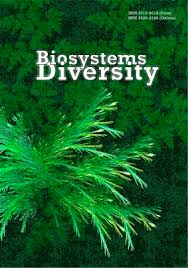Summer coastal rookeries and perspectives of the Baikal seal (Pusa sibirica) population in the conditions of the global warming
Summer coastal rookeries and perspectives of the Baikal seal (Pusa sibirica) population in the conditions of the global warming
Author(s): E. A. Petro, A. B. Kupchinsky, V. A. FialkovSubject(s): Energy and Environmental Studies, Regional Geography, Environmental Geography
Published by: Дніпропетровський національний університет імені Олеся Гончара
Keywords: Baikal seal; coastal rookeries; shore rookeries; molting; climate warming; species conservation;
Summary/Abstract: Based on the secondary literature, a retrospective characterization of the climate in the Baikal region, starting from the end of the Pleistocene, is given. According to satellite monitoring data, the characteristics of the ice regime of the Lake Baikal in the conditions of climate warming are presented. Moreover, we briefly discuss the impact of climate change on the ecology and biology of the Baikal seal (Pusa sibirica Gm.). Using video materials obtained online at one of the main island coastal rookeries of seals (on the island of Tonkyi, the archipelago of the Ushkany Islands, Lake Baikal) in 2011–2017, the dependence of the number of seals hauled out on the lake level and the peculiarities of the fishing regime was determined (the survey was conducted from May–June to October). A direct relationship was determined between the relative number of animals that had a moulting delay and the ice regime of a given year: the longer the floating ice in the northern part of Lake Baikal remained, the more numerous were the first approaches of seals to the studied rookery and the greater was the proportion of moulting individuals. It is reasonable to assume that the main reason for the Baikal seal to come ashore is not prolongued moulting time, but a physiological need for sunlight, which has a healing effect on the body of animals that lack solar radiation in winter. In general, climate warming has a negative impact on the state of the Baikal seal population. The available paleoclimatic reconstructions of the Holocene indicate that the population of the Baikal seal has experienced a lot of climate changes in its history. Nevertheless, if the current trends of climatic changes persist until the end of the 21st century, the ecology and biology of the seal will drastically change (up to the beginning of terrestrial reproduction), and the population will significantly decrease. However, the Baikal seal as a species would remain.
Journal: Biosystems Diversity
- Issue Year: 29/2021
- Issue No: 4
- Page Range: 387-392
- Page Count: 6
- Language: English

